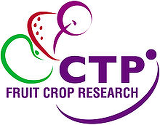October 2020 – september 2024
Hayden Tempest

Previous work has identified earwigs (Forficula auricularia, Linnaeus) as promising biocontrol agents of woolly apple aphid (WAA) (Eriosoma lanigerum, Hausmann). This is in part due to their status as residential predators. Earwigs are polyphagous omnivores, which means they are not dependent on WAA. This in turn allows them to be present and foraging in apple orchards as WAA starts emerging, the moment when they are most vulnerable to control. Several studies have shown that when combined with other natural predators, high numbers of earwigs can keep WAA infestations below action thresholds for spraying. However, other studies have frequently failed to find a negative correlation between earwig numbers and the severity of WAA infestation. This inconsistency may be due to earwig foraging behaviour, which is still poorly understood, or due to their unstable populations, which vary greatly in size and distribution between years. My project aims to shed light on this inconsistency, and specifically to use radio frequency identification (RFID) to tag earwigs and better understand their behaviour.
